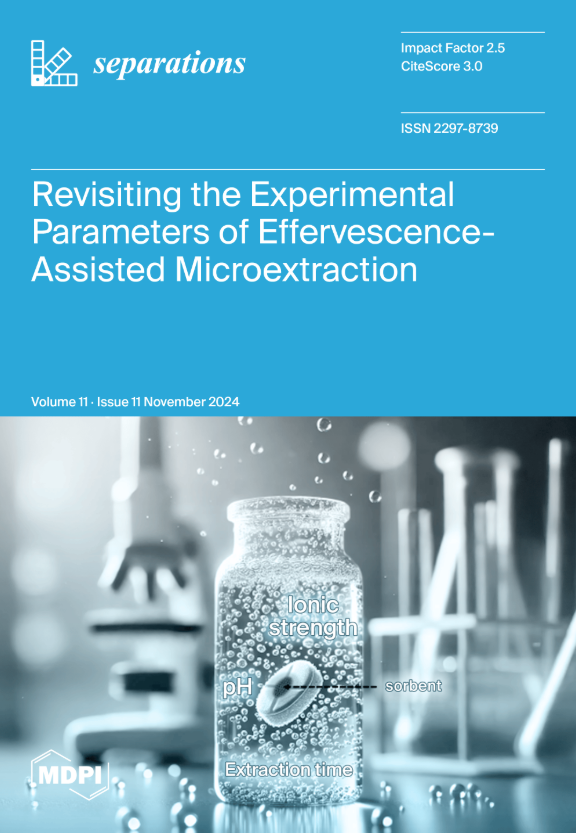富磷污泥和消化污泥的厌氧消化:混合比和乙酸的影响
IF 2.7
4区 工程技术
Q3 CHEMISTRY, ANALYTICAL
引用次数: 1
摘要
磷是影响富磷污泥厌氧消化的重要因素。研究了按不同比例混合的PRS和消化污泥(DS)的厌氧消化。结果表明,混合污泥的磷释放率随DS比例的增加而增加,直至DS比例超过50%。当PRS与DS的混合比例为3:1时,比磷释放率(SPRR)提高了20%,甲烷产量提高到7.39 mL/g VSS。进一步对添加乙酸浓度的实验表明,随着乙酸浓度的增加,磷的释放速率也有上升的趋势,直到浓度超过500 mg COD/L。最后,对DS和废活性污泥(WAS)的厌氧消化结果表明,WAS在厌氧消化初期没有典型的磷释放。本文章由计算机程序翻译,如有差异,请以英文原文为准。
Anaerobic Digestion of Phosphorus-Rich Sludge and Digested Sludge: Influence of Mixing Ratio and Acetic Acid
Phosphorus is a critical influencial factor in the anaerobic digestion of phosphorus-rich sludge (PRS). The anaerobic digestion of PRS and digested sludge (DS) mixed according to different proportions was studied. The result showed that the phosphorus release rate of the mixed sludge increased with the increase in DS proportion until the DS proportion was over 50%. When the mixing ratio of PRS to DS was 3:1, the specific phosphorus release rate (SPRR) was increased by 20% and the methane production was raised to 7.39 mL/g VSS. A further experiment on the concentration of the added acetic acid indicated that the phosphorus release rate also tended to rise with the increase in acetic acid until the concentration was over 500 mg COD/L. Finally, the results of the anaerobic digestion of DS and waste activated sludge (WAS) showed that there was no typical phosphorus release in the initial stage of anaerobic digestion in WAS.
求助全文
通过发布文献求助,成功后即可免费获取论文全文。
去求助
来源期刊

Separations
Chemistry-Analytical Chemistry
CiteScore
3.00
自引率
15.40%
发文量
342
审稿时长
12 weeks
期刊介绍:
Separations (formerly Chromatography, ISSN 2227-9075, CODEN: CHROBV) provides an advanced forum for separation and purification science and technology in all areas of chemical, biological and physical science. It publishes reviews, regular research papers and communications. Our aim is to encourage scientists to publish their experimental and theoretical results in as much detail as possible. There is no restriction on the length of the papers. The full experimental details must be provided so that the results can be reproduced. There are, in addition, unique features of this journal:
Manuscripts regarding research proposals and research ideas will be particularly welcomed.
Electronic files and software regarding the full details of the calculation and experimental procedure, if unable to be published in a normal way, can be deposited as supplementary material.
Manuscripts concerning summaries and surveys on research cooperation and projects (that are funded by national governments) to give information for a broad field of users.
The scope of the journal includes but is not limited to:
Theory and methodology (theory of separation methods, sample preparation, instrumental and column developments, new separation methodologies, etc.)
Equipment and techniques, novel hyphenated analytical solutions (significantly extended by their combination with spectroscopic methods and in particular, mass spectrometry)
Novel analysis approaches and applications to solve analytical challenges which utilize chromatographic separations as a key step in the overall solution
Computational modelling of separations for the purpose of fundamental understanding and/or chromatographic optimization
 求助内容:
求助内容: 应助结果提醒方式:
应助结果提醒方式:


